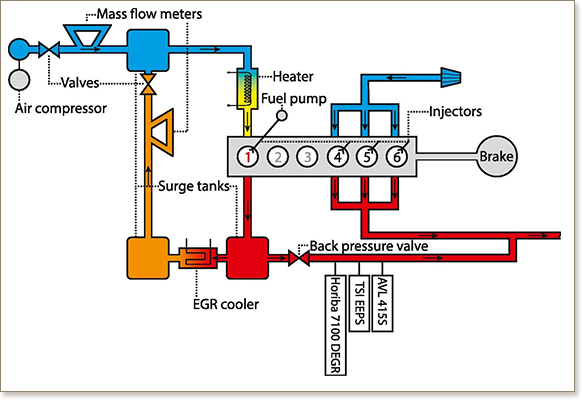
The main driver to investigate low temperature combustion concepts, such as partially premixed combustion (PPC), is the promise of low particulate matter (PM) and nitric oxide (NOx) emissions. A critical prerequisite for PPC is to temporally isolate the fuel injection and combustion events. In practice, exhaust gas recirculation (EGR) is applied in order to sufficiently extend the ignition delay to that effect. Hereby, in general, higher EGR rates are necessary for fuels with higher cetane numbers (CN).
Against this background, the objective of this paper is to investigate the efficacy, with respect to PM-NOx emissions and engine efficiency, of gasoline as a potential gas-to-liquid (GTL) CN suppressant in various dosages. The performance of the resulting GTLine blend will be evaluated under PPC operating conditions in a heavy-duty direct-injected diesel engine.
Setting aside for a moment any potential practical issues (e.g., flash point, vapor pressure) that fall outside the scope of this study, our data suggest that blending gasoline to otherwise high CN GTL appears to be a promising route to improve not only the efficiency, but also PM and NOx emissions, particularly when operating in PPC mode. Interestingly, this benefit is notwithstanding the high aromaticity of the gasoline compared to GTL.
Given the ongoing dieselization trend and associated surplus of gasoline in many regions, notably Europe, along with the fact that the cost price of gasoline is significantly lower than that of GTL, the proposed GTLine approach promises to be a cost effective way to accommodate GTL in a world wherein low temperature combustion concepts, such as PPC, appear to be really taking off.
